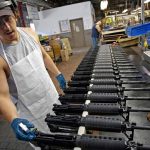AsiaInspection said its clients, including many western apparel brands and retailers, increased their audits of Asian factories by 61 percent in 2013 in the wake of widespread supply chain turmoil.
Audits were up by 47 percent in Bangladesh, 58 percent in China and 112 percent India, according to AsiaInspection’s 2013 Q4 Barometer report. The Hong Kong-based company provides product inspection, factory audit and laboratory testing services to more than 3,000 clients worldwide.The figures appear to validate reports that many brands started to look for alternatives to Bangladesh after the collapse of the Rana Plaza building killed 1,129 garment workers in May. Bangladesh is the largest exporter of apparel in volume after China.
AsiaInspection said the volume of product inspections it conducted rose 36 percent in Bangladesh, 44 percent in India, 71 percent in Vietnam and 114 percent in Cambodia.
The figures reflected rising concern over social issues as strikes and riots erupted throughout the year in factories across India, Bangladesh, Cambodia and Myanmar with workers demanding higher wages. In Bangladesh, the minimum wage is half that of China. In Cambodia, Columbia Sportswear, Adidas and Puma recently urged garment factory owners, labor unions and the government to review the country’s annual review process for minimum wage increases after a confrontation between security forces and striking garment workers resulted in the death of four workers in the first week of January.
China looking better every day
AsiaInspection notes concerns over stability in other Asian countries may help explain why the rise of the Renminbi RMB and wage inflation have not cut as deeply as expected into China’s exports, which increased 9.3 percent for the 11 months ending Nov. 30, 2013. That put China on track to report the largest annual trade surplus since 2008.
AsiaInspection’s product inspection figures mirror this with a +17 percent increase in ordered inspections in China in 2013 compared with 2012. In 2013, China remained by far the largest sourcing region used by AI clients. To put it in perspective, Bangladesh exports amounted to a mere 1 percent to that of China.
In terms of percentage growth, 2013 confirmed the trend for new sourcing regions with Africa seeing a 47 percent increase in the second half of the year. Vietnam was up by 71 percent and Cambodia doubled despite protests over wage concerns.
The road ahead
2013 was the year when supply chain management, or rather the lack thereof, made headlines and became a concern ot only for sourcing professionals, but for consumers as well. The Rana Plaza tragedy, the horsemeat scandal in Europe and repeated food safety horror stories in China raised awareness globally on the need for a stricter end-to-end supply chain management.
“The common situation when a Western buying office does not know precisely where the products they purchase are manufactured and what’s going on in their outsourced factories is doomed,“ said Sebastien Breteau, CEO of AsiaInspection. “Major names like H&M, Apple and HP have published the list for all or part of all their approved suppliers. We will see more of such initiatives with major brands taking back full control and enforcing visibility over their suppliers. Expect 2014 to be the year transparency becomes a reality in global supply chains.”















